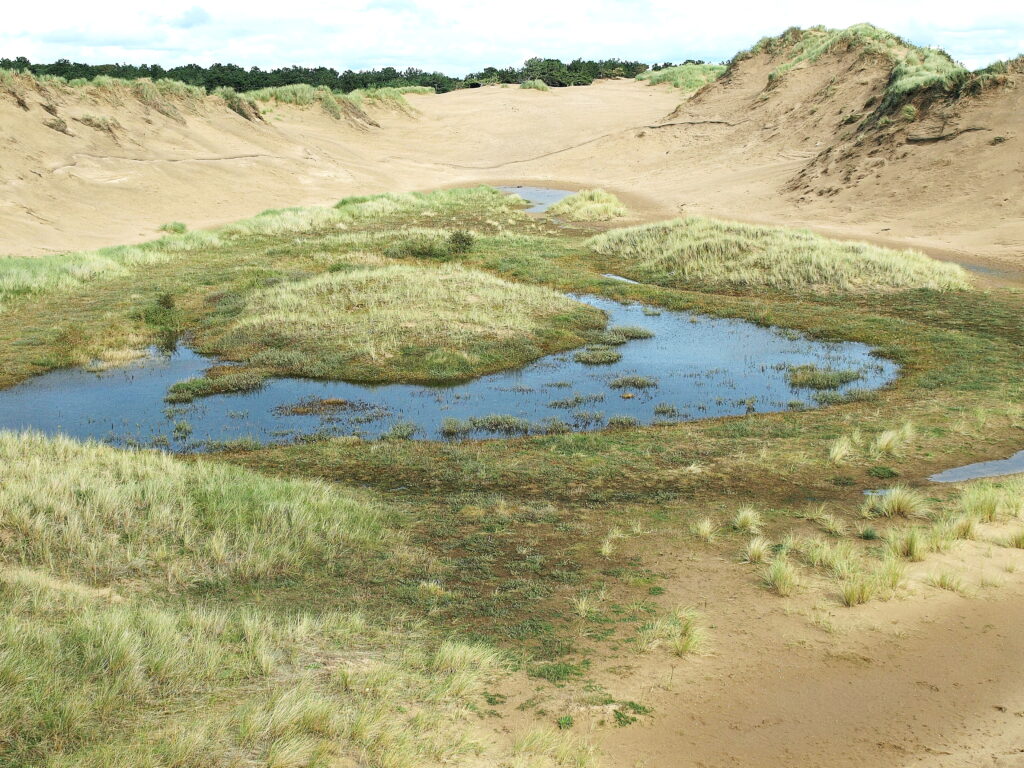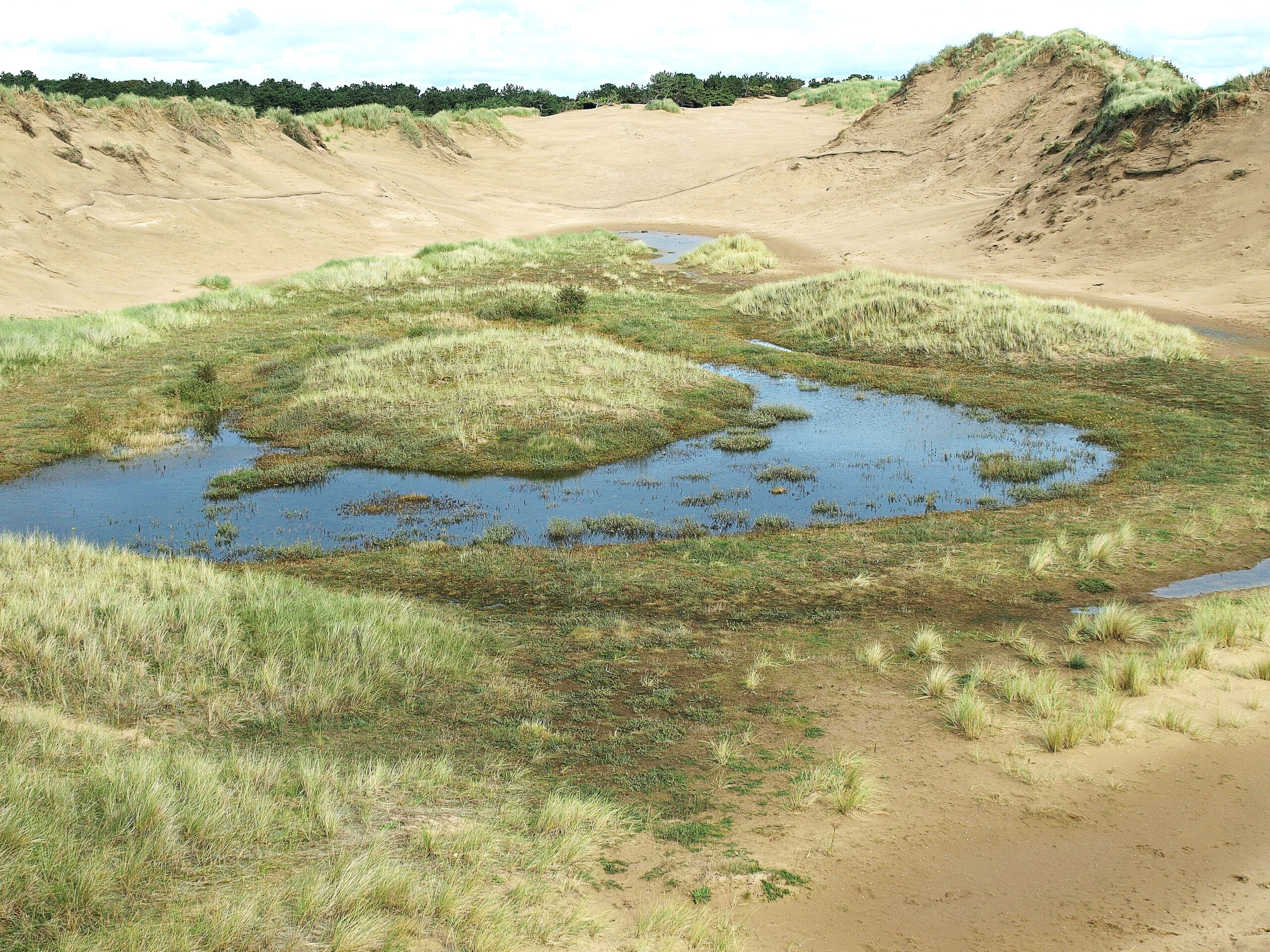Sand-dune blowouts provide challenging conditions for life due to their constantly changing nature. Despite this, they can support a wide variety of rare, specialist plants and animals. The ‘Devil’s Hole’ in Merseyside is one of the largest blowouts in the UK, providing ideal breeding conditions for species such as the Natterjack Toad and Northern Dune Tiger Beetle. Philip Smith looks at the history of this unique ecosystem and describes the wildlife importance of the site.
Coastal sand dunes are among the most biodiverse of habitats, but their rich assemblages of plants and animals are partly dependent on landscape dynamism, reflected in the movement of sand by wind to create a variety of landforms, including what are known as ‘blowouts’. These are wind-scoured hollows in dune ridges, often initiated by damage to surface vegetation, which then enlarge laterally and vertically until the dune is destroyed or the groundwater table is reached, producing a dune slack (Maun 2009).

